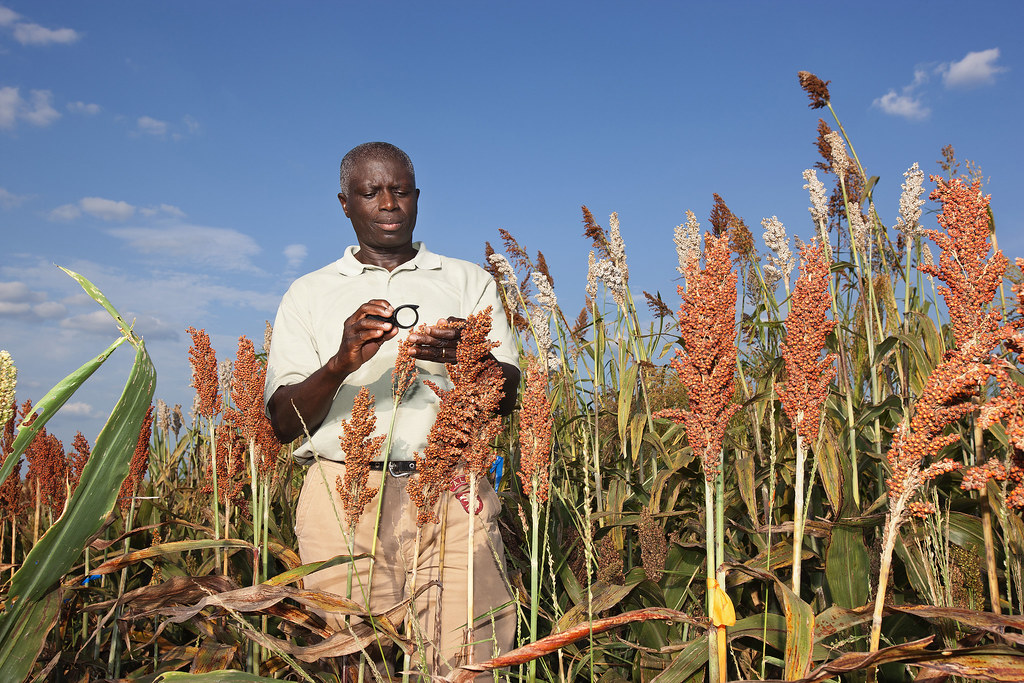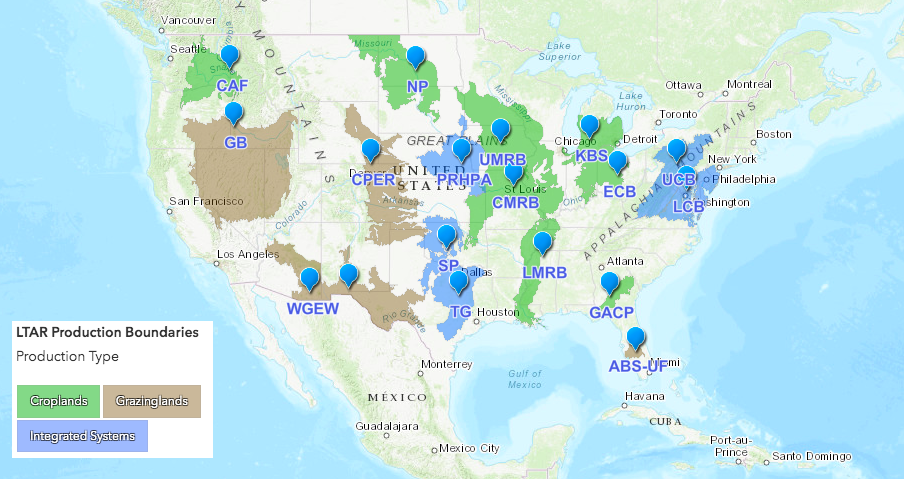
Editor’s Note: This is the fifth blog in a series focusing on specific provisions included in the Agriculture Resilience Act (ARA) introduced by Rep. Chellie Pingree (D-ME) in February 2020. The ARA represents the first comprehensive piece of legislation introduced in the House of Representatives addressing climate change and agriculture. Read blogs one, two, three, and four here.
This fifth blog focuses on regional and long term climate research, and it was co-authored by Mark Schonbeck, Research Associate for the Organic Farming Research Foundation (OFRF), and Cristel Zoebisch, Climate Policy Associate at the National Sustainable Agriculture Coalition in partnership with OFRF.
Food and agriculture research is critical to improve farm viability, rural vitality, public health, food security, and agriculture’s potential to address the climate crisis. However, the U.S. Department of Agriculture (USDA) research funding has stagnated for decades, limiting innovation and jeopardizing our future. The Agriculture Resilience Act (ARA) recognizes the importance of public research in enhancing agriculture’s potential to sequester carbon, reduce greenhouse gas (GHG) emissions, and build local and regional resilience to extreme weather events and other stresses. The legislation seeks to triple federal investment in public food and agriculture research by 2030 and quadruple it by 2040.
The ARA adds a tenth purpose to current statutory purposes for federal agricultural research, extension, and education: “to accelerate the ability of agriculture and the food system to first achieve net zero carbon emissions and then go further to be carbon positive by removing additional carbon dioxide from the atmosphere.”
The bill aims to achieve this purpose and to build agricultural and food system resilience to climate disruptions by establishing climate adaptation and mitigation as statutory priorities for the Agriculture Food and Research Initiative (AFRI), Specialty Crops Research Initiative (SCRI), Sustainable Agriculture Research and Education (SARE), and the Appropriate Technology Transfer for Rural Areas (ATTRA).
The climate crisis requires long term (decades), nationwide research and outreach endeavors that addresses region-specific impacts of climate change, as well as delivering new and emerging solutions to producers. To address these needs, the ARA would increase funding for two important existing USDA programs: Climate Hubs, run by the Agricultural Research Service (ARS) and U.S. Forest Service (USFS), and the ARS Long-Term Agroecological Research (LTAR) Network. This blog post focuses on the ARA provisions for these two programs, which were also included in the recently published House Select Committee on the Climate Crisis report.
Establishing a National Network of Regional Climate Hubs
The ARA provides a first-ever legislative authorization for the USDA Climate Hubs at $50 million per year, a nearly six-fold increase over current funding. The bill codifies the national network of regional hubs to support climate risk mitigation and adaptation that were established administratively during the Obama presidency. The hubs deliver science-based, region-specific, cost-effective, and practical tools and technical support that help producers and landowners make effective conservation and business planning decisions in response to a changing climate.
Consistent with current practice, the ARA tasks ARS and USFS to partner with other federal agencies, Extension, colleges and universities, agricultural experiment stations, state and local governments, tribes, and nongovernmental organizations (NGOs) to deliver Climate Hub services. However, the ARA also directs each regional hub to solicit stakeholder input on regional priorities, and to collaborate with farmers and NGOs in conducting research and outreach on priority topics including:
- GHG mitigation benefits of agroforestry, advanced grazing systems, crop-livestock integration
- improved measurement of soil carbon, GHGs, and soil health
- biological nutrient cycling and plant-microbe partnerships
Finally, the ARA directs Climate Hubs to work with the USDA Risk Management Agency (RMA) to better account for climate risk and risk mitigation through soil health management in RMA actuarial tables and provide recommendations to the Secretary of Agriculture.
The USDA launched the 10 Climate Hubs in 2013 to deliver science-based, practical information and tools to help farmers and land-owners sustain agricultural productivity, natural resources, and rural economies under increasing climate variability. Because climate disruption impacts vary among regions, each Climate Hub works with farmers, ranchers, and other stakeholders within its service area to address the region’s specific climate risks and develop regionally-relevant adaptive strategies.
Since their founding, the USDA Climate Hubs have provided a wide diversity of practical tools, including up to date reports on current drought conditions and other climate stresses, new adaptive strategies, workshops and educational programs, and case studies of farms who have utilized a five-step Adaptation Workbook to develop site-specific climate response plans. Some examples include:
- Hurricane Preparation and Recovery Guides (Southeast Hub)
- A Climate Adaptation Fellowship that pairs farmers with advisors to develop climate adaptation tools for vegetable, fruit, and dairy farmers, and forest managers (Northeast Hub)
- A case study featuring Hay Camp Farm, a crop-livestock integrated organic farm adapting to intensifying heat and drought through diverse cover crops, reduced tillage, rotational grazing, and silvopasture tree planting (Southwest Hub).
- A case study of R & G Miller and Sons organic dairy in southern Wisconsin, is adapting to wetter springs through rotational grazing, fall planting, and reduced tillage (Midwest Hub).
- Wildfire management studies (California Hub), a FireCLIME Vulnerability Assessment Tool (Southwest Hub), and upcoming fire management workshop (Northern Plains Hub).
- A research report on environmental knowledge and perceptions of the urban Washington, DC population, and how to better engage low-income, Black, and other minority residents in building community resilience to climate impacts (Northeast Hub).
Check out the Climate Hubs website to access more information, including upcoming workshops, events, and educational opportunities.
The ARA would expand the reach and impact of Climate Hubs by authorizing them and increasing their funding to $50 million per year. For some perspective, for just 25 cents per taxpayer, this vital network could empower our farmers and ranchers to become active leaders in our efforts to turn the climate crisis around.
Promoting Long Term Agroecological Research
The ARA also provides a first-ever legislative authorization for the ARS Long Term Agroecological Research (LTAR) Network at $50 million per year. Currently, all 18 LTAR sites rely on $20 million in annual appropriations, which leaves some sites unfunded and all sites underfunded.
In addition, the ARA would:
- Establish climate change adaptation and mitigation as major statutory purposes of the LTAR Network
- Integrate measurements and data collection across LTAR sites to enhance understanding of agroecosystem function in all major U.S. agricultural regions and production systems
- Make data collected through the network openly available to researchers and the public
The USDA established its first Long Term Farming Systems Trials site at Beltsville, MD in 1910, and has since established long term trials at over a dozen other sites across the U.S. Current research priorities include comparisons of soil health, nutrient cycling, water efficiency, carbon sequestration, and net GHG emissions in contrasting cropping and grazing systems.

For more information on the research conducted at each LTAR site, click here.
In 2011, Drs. Mark Walbridge and Steven Shafer of USDA proposed to establish a network of ARS Long Term Agroecological Research sites, in order to address the mounting challenges facing U.S. agriculture in feeding a growing population in a time of climate change and diminishing quantity and quality of soil and other natural resources. Recognizing the need for a coordinated nationwide response to these challenges, they recommended that sites share and coordinate research questions, protocols, data collection and analysis, and interpretation. The LTAR Network that emerged from this recommendation established the following priorities:
- Improve agroecosystem production and function
- Address climate variability and change
- Conserve natural resources and protect the environment
- Promote rural opportunity and prosperity
Understanding the impacts of climate change on U.S. agriculture and vice versa, and optimizing agricultural practices for climate mitigation and resilience will require a long term commitment and close collaboration among research endeavors representing all major agro-ecoregions and production systems. The LTAR Network has tackled this challenge on a shoestring budget of $20 million per year ($1.1 million per site) with no guarantee of future funding. By establishing a legislative authority for $50 million a year and affirming climate mitigation and resilience as top priorities, the ARA would substantially strengthen the capacity of the LTAR Network to help producers and our food system meet the challenges of climate change, water shortages, and soil and other resource degradation.
For more information, see the AgCROS (Agricultural Collaborative Research Outcomes System) website for the LTAR Network.
What Comes Next?
The ARA recognizes that agriculture has enormous potential to sequester carbon and reduce GHG emissions, and that further research is needed to realize this potential. Because the climate crisis has impacted regions in vastly different ways, farmers and ranchers need regionally appropriate tools and knowledge. As farmers and ranchers continue to adapt and innovate, long-term research will help empower them to address the climate crisis.
As Congress continues to address the climate crisis, NSAC hopes that agricultural research will gain broad, bipartisan recognition and support as a vital part of climate solutions. Both the ARA and the House Select Committee’s report on the climate crisis include important provisions that should become part of any comprehensive climate legislation or the 2023 Farm Bill. NSAC and our members will continue to work with Congress and USDA to ensure that farmers and ranchers benefit from the research they need to become leaders in our efforts to combat the climate crisis.

